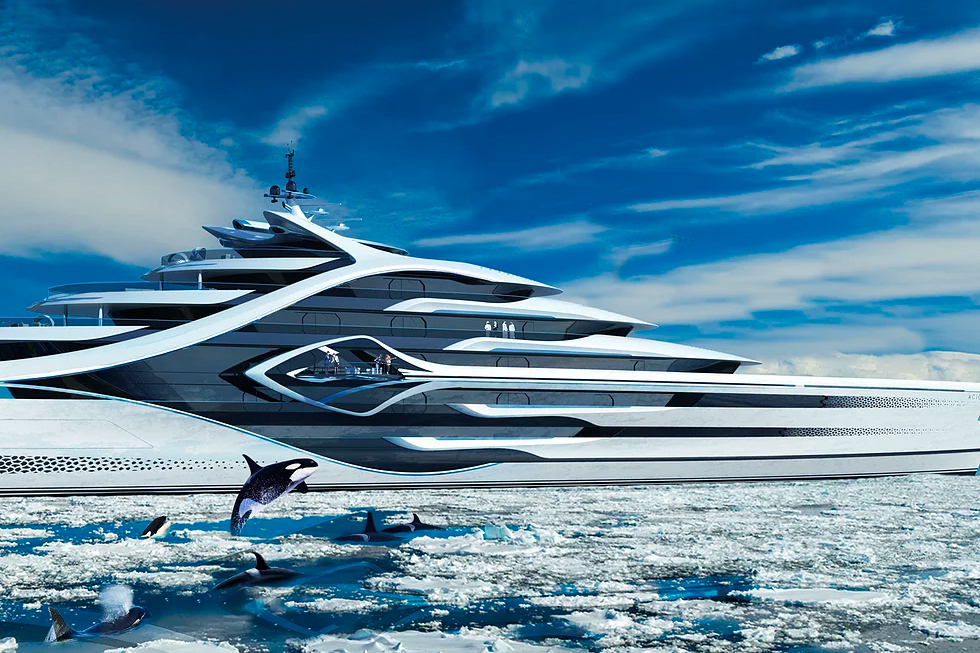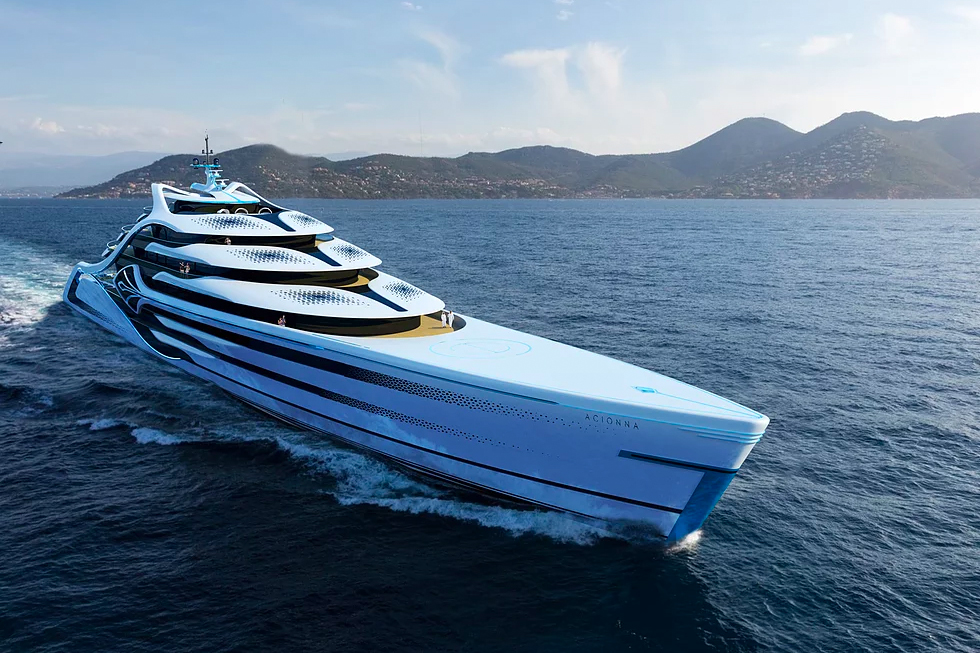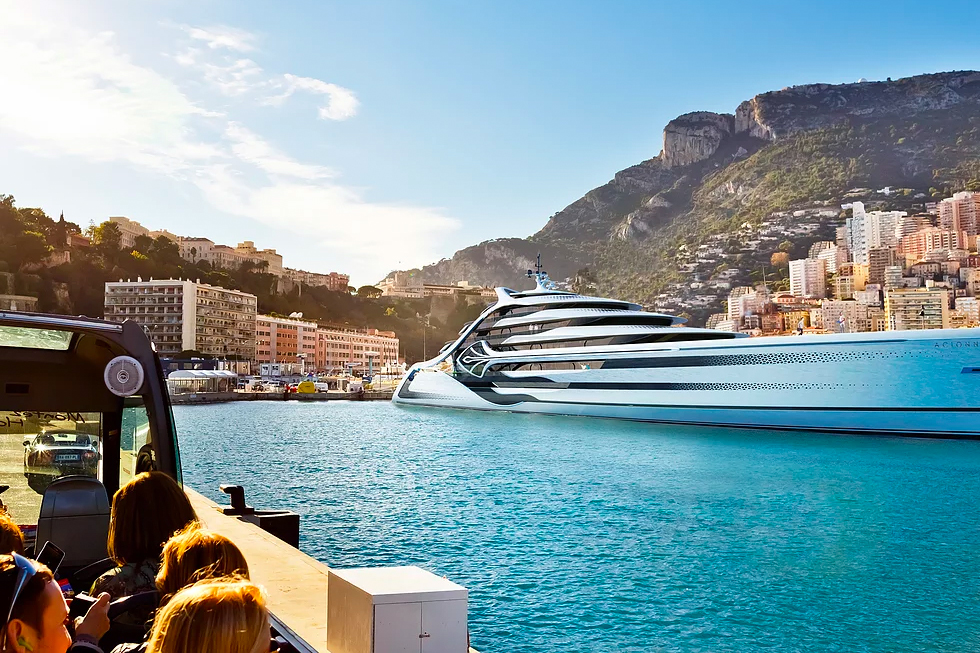At what point can you look in the mirror and confidently proclaim, “I have arrived?” Is it when your yacht has a helipad? Or so many rooms that you could lose the keys to your backup Bugatti for hours among its many decks? What about when your superyacht has its own smaller satellite yacht? These are the questions the ultra-luxurious Acionna superyacht concept seeks to answer.

This latest concept from renowned British yacht designer Andy Waugh is a jaw-dropping study in the extremes of superyacht building. Indeed, Waugh describes the Acionna as “the ultimate world cruising megayacht and challenges many of the preconceptions about larger yachts. Her avant-garde styling is a feast-for-the-eyes from every angle, exaggerated by her elegant proportions and sheer scale.”
The sleek, steeply raked exterior looks surprisingly sporty for a ship that’s more than a tenth of a mile in length. By the numbers, the design can only be described as absurd. At 175 meters (575 feet) long, she would be the second longest yacht in the world. Waugh confirms that this size opens a world of customization possibilities for owners who want everything from full-size squash courts to helicopter hangars to 65-foot indoor lap pools. The sprawling interior stretches over eight decks including a two-story main saloon. The unique floor plan boasts several communal “islands” with multiple bars, massive dining and lounge areas, and a wading pool with twin cascading waterfalls. Bikini models and Cristal not included.
At the heart of Acionna, Waugh proposes a bleeding-edge hydrogen propulsion system. It’s so revolutionary in a personal yacht that it’s the one thing holding the concept back from production. The electric and fossil fuel systems used in today’s traditional ship builds rely on recharging and therefore provide a finite amount of power. The plan for Acionna is to incorporate the sort of renewable energy power plant currently used in cruise ships. If successful, the ship could run indefinitely and with zero emissions.
Full-scale production of the Acionna is contingent on a lot of yet-to-be-developed technology. For now, it’s merely a concept, and official pricing has yet to be announced. However, if you just can’t wait to blow your entire 401(k) on something right now, why not plunk down your hard-earned millions on a deposit for space glamping?







